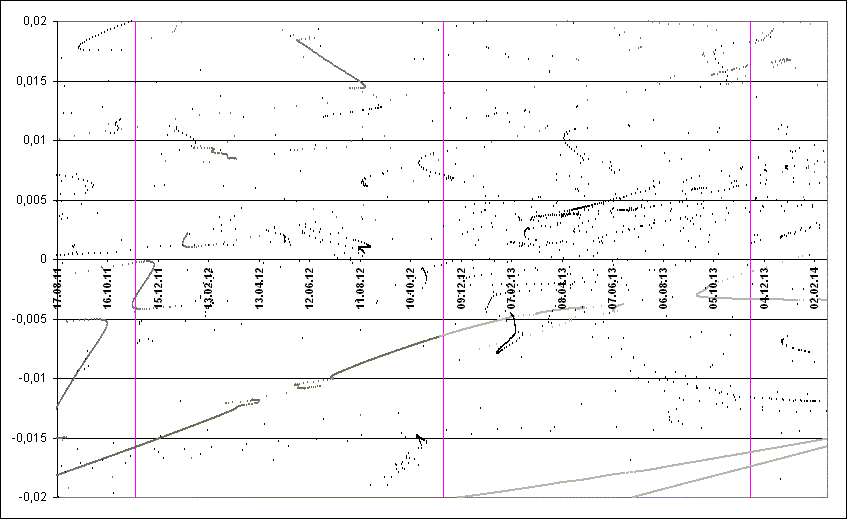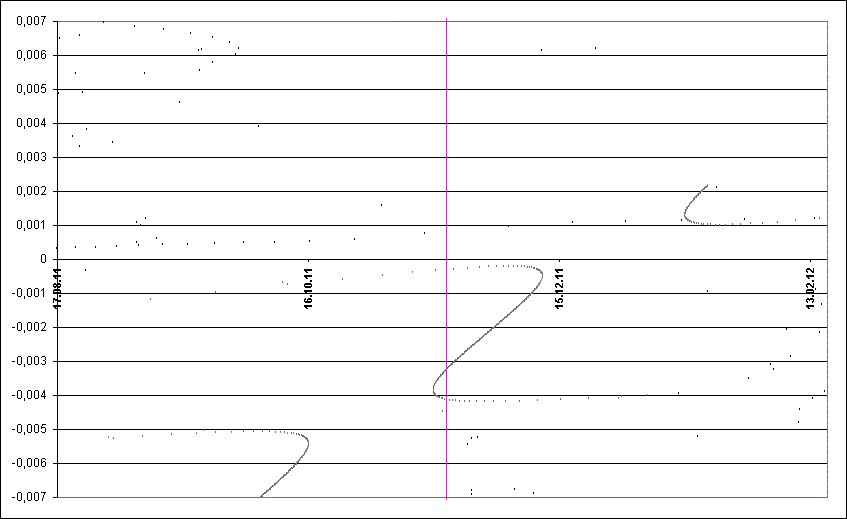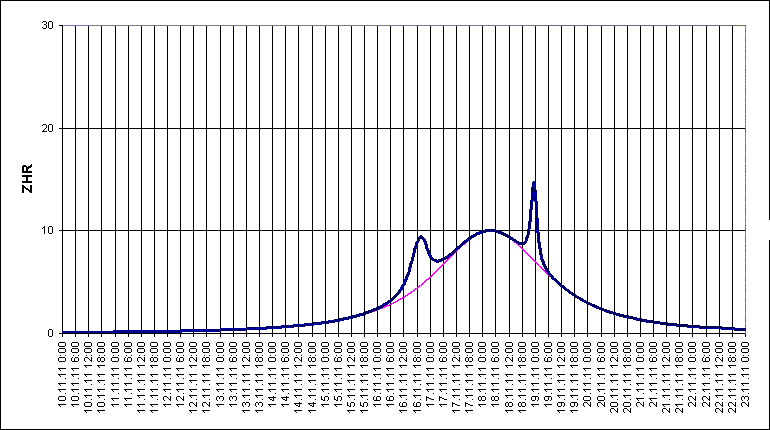Leonids 2011: prediction of activity
to the list of predictions

Fig. 1. Space-temporal projection of Leonids trails parts onto their minimal distance passages dirung the period (correspondence between colours of the particles and their ejection velocities can be seen here).

Fig. 2. Detailed space-temporal projection of Leonids trails parts onto their minimal distance passages in 2011 (correspondence between colours of the particles and their ejection velocities can be seen here).

Fig. 3. Assumed profile of overall Leonid activity (blue line) and its background component (red line).
In 2011 a usual Leonid return is expected with overall maximum ZHR up to 15. However, there is a possibility of three local peaks, two of which will be caused by interaction with trails and the third is the background one.
The first local peak will be caused by 1800 trail. Its own ZHR is 4-5, and adding to the background activity this should give ZHR ~10 around 19:58 UT on 16 November. The encountering parts of 1800 trail have ejection velocity of ~45 m/s, that means low meteor brightness around this submaximum time and possibility of higher activity on radio. Then some decrease in activity is expected with local minimum of ZHR=7 around 3:24 UT on 17 November.
The next maximum will be the background one. By IMO's data, it occurs at solar longitude 235.27° (3:34 UT on 18 November 2011). We expect that its intensity will be not high, with ZHR of ~10. Then some minor decrease in activity to ZHR=9 is possible around 17:56 UT 18 November. Though such weak variations in activity could hardly be detected by visual observations, so between second and third peaks activity will likely sustain at ZHR=9-10.
Finally, the third and most intensive amoung non-prominent Leonids 2011 peaks will be an enhancement from 1567 trail. It is expected to occur around 23:25 UT on 18 November, and ZHR for a short period should reach 15. This peak will be notably more sharp that previuos two, significant changes in meteor brighness are not expected.
References
1. "Comet's dust 2.0" program by S. Shanov and S. Dubrovsky. [Used for orbital computations.]
2. Lyytinen E, van Flandern T. "Predicting the strength of Leonid outbursts", 2000, Icarus, P. 158-160.
3. Jenniskens P. Meteor showers and their parent comets, 2006, 780 p. 4. Kasuo Kinoshita, http://jcometobs.web.fc2.com/ [Orbital elements of the comet 55P Tempel-Tuttle]